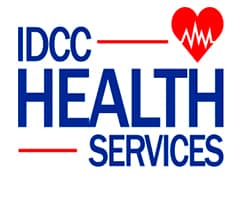Exploring Three Distinct Approaches to Pain Management
Embarking on a journey towards effective pain management requires a compass of knowledge that points towards three distinct directions. This blog serves as your guide to explore these paths, each offering a unique approach to tackling and diminishing pain. As we navigate through the landscape of pain relief, we will shed light on the realm of pharmaceutical solutions, delve into the holistic universe of physical therapy and rehabilitation, and unravel the intriguing connection between mind and body techniques.
By demystifying these approaches in a manner that is both expertly informed and approachably human, we empower you to confidently address the complexities of pain management. Keep reading to dive into the exploration of these three distinct approaches to better understand how they can enhance your well-being.
Pharmaceutical Pain Management: Medications for Alleviating Pain
This approach involves the utilization of a variety of medications, each designed to target specific types and intensities of pain. Among these, nonsteroidal anti-inflammatory drugs (NSAIDs) emerge as a widely recognized option. NSAIDs work by inhibiting enzymes responsible for inflammation, effectively reducing pain and swelling. While they are often preferred for mild to moderate pain, it’s crucial to be mindful of potential gastrointestinal or cardiovascular side effects, particularly with prolonged use or higher dosages.
Moving along the spectrum of pharmaceutical options, opioids also play a significant role in pain alleviation. These potent medications bind to opioid receptors in the brain, blocking pain signals and inducing feelings of euphoria. However, the benefits of opioids come hand in hand with substantial risks, including the potential for addiction, respiratory depression, and overdose. Careful consideration by both healthcare providers and patients is essential when opting for opioid-based pain management, ensuring that the benefits outweigh the potential drawbacks.
By examining the benefits and potential pitfalls of NSAIDs and opioids, individuals can collaborate with their healthcare professionals to determine the most suitable pharmaceutical approach tailored to their unique pain management needs.
Physical Therapy and Rehabilitation: Holistic Techniques for Pain Alleviation
When seeking holistic approaches to pain management, the realm of physical therapy and rehabilitation emerges as a beacon of hope. This avenue transcends the realm of pharmaceuticals, focusing on a comprehensive understanding of the body’s mechanics and its potential for healing. A central pillar of physical therapy lies in manual techniques, where skilled therapists employ hands-on methods to manipulate joints, muscles, and soft tissues. These precise adjustments not only help alleviate pain but also restore mobility, enhancing the body’s natural ability to mend itself.
Complementing manual therapy, tailored exercise programs form a cornerstone of holistic pain management. These programs, meticulously designed to target specific areas of concern, aid in strengthening muscles, improving flexibility, and promoting overall stability. Additionally, advanced modalities like ultrasound and electrical stimulation further expand the repertoire of pain-alleviating tools. Ultrasound therapy involves the use of sound waves to stimulate blood flow and promote tissue repair, while electrical stimulation can effectively reduce pain by interfering with pain signals to the brain.
By embracing the multidimensional approach of physical therapy and rehabilitation, individuals embark on a journey of active participation in their pain management. The integration of manual therapy, personalized exercise regimens, and innovative modalities underscores the body’s incredible capacity to heal and thrive.
Mind-Body Strategies: Harnessing the Power of the Psyche for Pain Control
In the fascinating convergence of psychology and pain management, mind-body strategies offer a captivating avenue for individuals seeking alternative approaches. These techniques recognize the undeniable connection between mental and physical well-being, harnessing the power of the mind to influence pain perception and overall quality of life. Among these strategies, mindfulness meditation stands as a beacon of serenity. By cultivating mindfulness, individuals learn to observe their thoughts and sensations without judgment, thereby reducing the emotional reactivity that often accompanies pain. This practice has been shown to recalibrate neural pathways, leading to diminished pain intensity and a heightened sense of tranquility.
Cognitive-behavioral therapy (CBT), another cornerstone of mind-body strategies, empowers individuals to reframe their thoughts and attitudes towards pain. By identifying and challenging negative thought patterns, CBT equips individuals with coping mechanisms to navigate pain-related stressors more effectively. Additionally, relaxation techniques such as deep breathing and progressive muscle relaxation contribute to the arsenal of mind-body interventions. These techniques induce a state of physiological calmness, helping to mitigate muscle tension and reduce the perception of pain.
Complementary and Alternative Therapies: Exploring Diverse Avenues for Pain Relief
These approaches, rooted in ancient traditions and innovative techniques alike, offer a fresh perspective on mitigating pain and enhancing overall well-being. Acupuncture is one such method that borrows from conventional Chinese medicine. It involves inserting tiny needles into certain body locations in order to promote energy flow. While its mechanisms remain a subject of ongoing research, acupuncture has garnered attention for its potential to alleviate pain by releasing endorphins and triggering natural healing processes.
Herbal remedies, with their historical roots spanning cultures and centuries, stand as another intriguing facet of complementary and alternative therapies. From turmeric to devil’s claw, various herbs have been associated with anti-inflammatory and pain-relieving properties. While scientific evidence varies, some herbs have shown promise in reducing pain and inflammation, prompting researchers to delve deeper into their potential therapeutic effects.
Furthermore, chiropractic care, founded on the principle of spinal manipulation to restore proper nerve function, offers a holistic approach to pain management. This therapy aims to improve joint mobility, alleviate muscle tension, and promote overall alignment, potentially contributing to reduced pain and enhanced bodily function.
